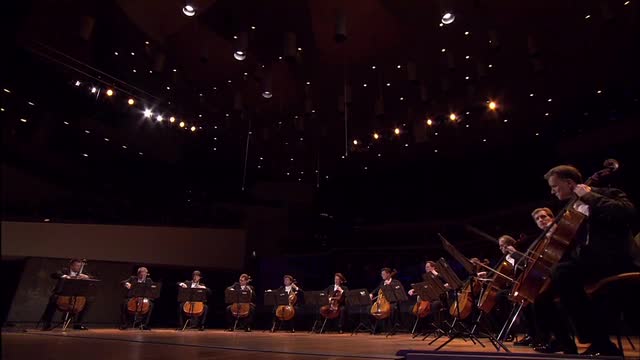Julius Klengel, son of a Leipzig lawyer and amateur musician, became absorbed at an early age into the musical life of Leipzig. This was characterised by a certain scholarly conservatism, the legacy of Felix Mendelssohn, his colleagues and protégés (Klengel’s father had been a personal friend). Accordingly, Klengel became a pupil of Emil Hegar (1843–1921) who had in turn studied with the equally conservative Grützmacher of the Dresden school.
At fifteen Klengel joined the Leipzig Gewandhaus Orchestra, becoming principal cellist in 1881. He also became a Royal Professor at the Leipzig Conservatory. Later in the decade his involvement with music in St Petersburg resulted in his giving the Russian premiere of Haydn’s Concerto in D and, in 1889, playing in the St Petersburg String Quartet along with Joachim pupil Leopold Auer. Klengel was also a member of the Brodsky Quartet and the Gewandhaus-Quartett, which (founded in 1808) is the oldest continuously-named quartet in existence.
His playing drew mixed reactions. Some criticised Klengel for putting scholarship above tonal beauty, whilst others praised his tonal characteristics. Klengel’s teaching activities were more unambiguously successful, however. His materials, including Technical Exercises in All Keys (1909) and Daily Exercises (1911), were well regarded and he had a punishing schedule (giving fifty lessons per week in Leipzig) with pupils including Emanuel Feuermann, Guilhermina Suggia, Paul Grümmer, Gregor Piatigorsky and William Pleeth. Klengel was also an active composer in the Leipzig style, his works including four double concertos as well as a sonata, caprices and Hymnus for twelve cellos (1909), dedicated to conductor Arthur Nikisch.
His recordings epitomise, rather startlingly, surviving traits of a conservative German classical approach to cello playing associated with the so-called Dresden school and with Leipzig. Listening to Klengel’s 1927 Bach Suite No. 6 (arranged for cello and piano) at once calls to mind Joseph Joachim’s violin-playing. There is almost no vibrato here, whilst (unlike Joachim although, apparently, common amongst cellists of his generation) there is frequent and pronounced use of portamento over many wide intervals. Indeed Klengel, for these reasons, sounds one of the most old-fashioned cellists on record. This is less evident in excerpts of Beethoven’s Op. 131 Quartet with the Gewandhaus-Quartett, where the whole sound is dominated by a regular if somewhat primitive violin vibrato. These discs, from 1916, are some of the earliest quartet recordings and bear interesting comparison to the acoustic recordings made by the Berlin-based Klingler Quartet in 1911–1912.
© Naxos Rights International Ltd. — David Milsom (A–Z of String Players, Naxos 8.558081-84)
| Title | |
| 12 CELLISTS OF THE BERLIN PHILHARMONIC ORCHESTRA: 40th Anniversary Concert | |

|
12 CELLISTS OF THE BERLIN PHILHARMONIC ORCHESTRA: 40th Anniversary Concert
Composers:
Bourtayre, Henri -- Debussy, Claude -- Ellington, Duke -- Faur, Gabriel -- Francaix, Jean -- Hupfeld, Herman -- Kaiser-Lindemann, Wilhelm -- Klengel, Julius -- Legrand, Michel -- Lennon, John -- Louiguy, Louis -- McCartney, Paul -- Monk, Thelonious -- Morricone, Ennio -- Piazzolla, Astor -- Ravel, Maurice -- Scotto, Vincent -- Tizol, Juan -- Williams, Cootie
Artists:
12 Cellists of the Berlin Philharmonic -- Bronner, Till -- Dasch, Annette
Label/Producer: EuroArts |
